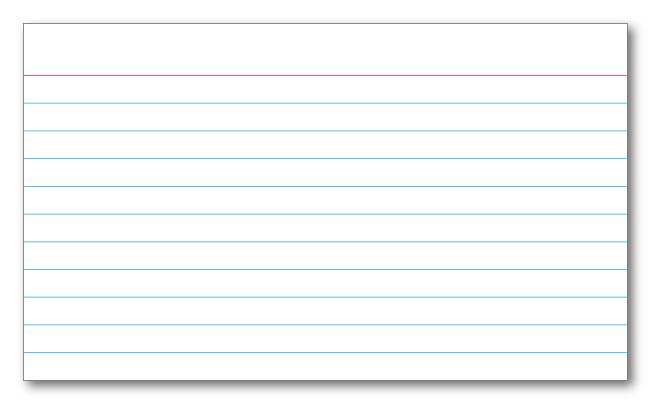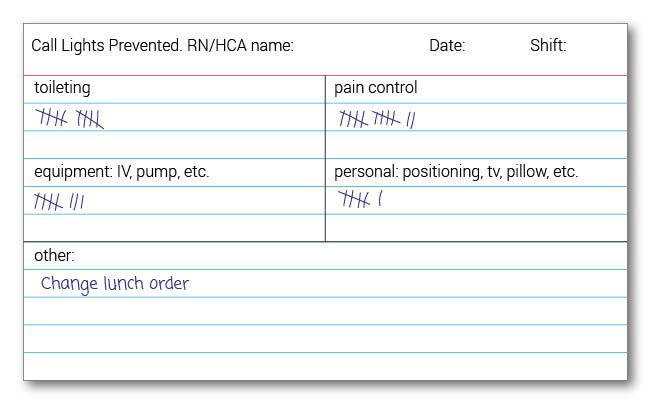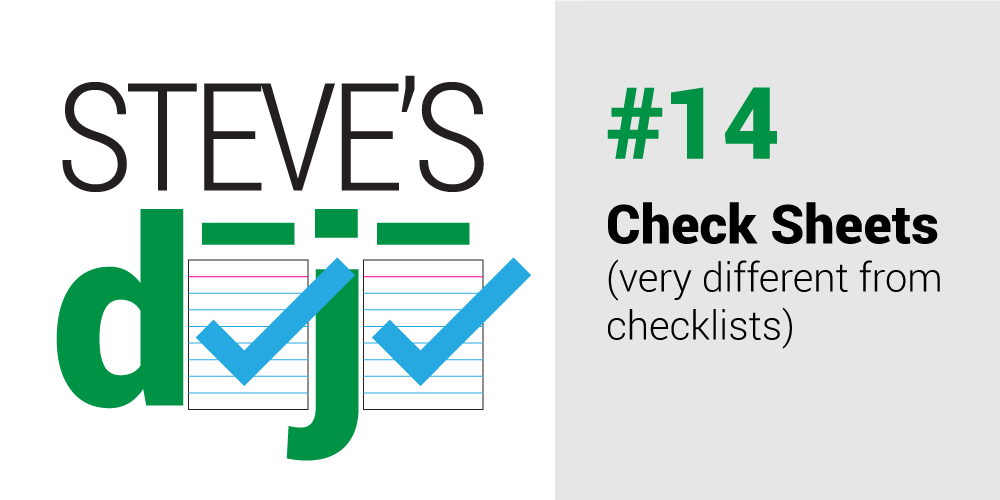or years we have measured call light response times in terms of objective time stamps and patient perception. And as the cliché predicts, what gets measured gets managed. Her case, explains how nurse unit manager Colline Prasad, along with Kathy Schumann and Aimee Fleischmann, improved their call light response times and the overall frequency of call lights.
Their SlideShare highlights useful secondary research on the most common reasons patients push the button (toileting, pain, IVs/pumps, personal assistance, repositioning) but Prasad wanted primary research.
When Prasad asked about her team’s speed of response, patients consistently answered questions she hadn’t asked. For instance, they explained how frustrating it was to push the button because it acknowledged a painful lack of independence. Patients also explained reluctance to use the call light because they didn’t want to bother anyone. Some admitted they pushed the button only after a failed (and often dangerous) attempt to do something, such as reach for a jug of water, on their own.
This striking voice-of-the-customer data redirected Prasad’s efforts from an even faster response to preventing call lights in the first place. Prasad launched a data-gathering effort among the HCAs. Buried in the sixth paragraph of the case is this: “She [Prasad] asked them to keep track of how many calls they prevented during one shift…”
About this manual data gathering, Colline mentioned casually, “I just had nurses and HCAs keep a 3x5 card with them, and write down every time they thought they prevented a call.”
The process improvement world has a name for the tool she used: check sheets. Unrelatedly, the pest control world has given the same name to the diagnostic process when bedbugs are a concern.
ASQ.org defines a check sheet as, “a structured, prepared form for collecting and analyzing data. This is a generic tool that can be adapted for a wide variety of purposes.” Kaoru Ishikawa lists check sheets among his Seven Friendly Process Improvement Tools; friendly because no statistics are required.
Use a check sheet when the data you need isn’t gathered electronically but can be observed. Most commonly, check sheets help observers record the frequency of workplace events: Specific actions (e.g.: call lights avoided), specific defects, causes of defects, or locations and timing of events.
A check sheet is very different from a checklist. First, “check sheet” is two words and “checklist” is one. Beyond that artifact of our exasperating language, a check sheet is a measurement tool and a checklist is an error prevention tool. Here’s an example of a check sheet from The Joint Commission. And here’s a re-creation of Prasad’s check sheet; the simplest it could be and perfectly serviceable to her needs:

But Prasad could have formalized it based on the most common reasons for call lights:

There’s not much to a check sheet at first glance, but significant thought is built in. These custom forms include historic data (e.g.: Schumann's SlideShare), domain expertise, and your data gathering objectives. The extra effort in design serves the data gatherer, helping them record and quantify common workplace events quickly and consistently while minimizing the time their eyes are off the action.
Plan for some trial and error when designing a check sheet; the chances that I designed an optimal check sheet for Prasad’s purposes are near zero. The image above represents a hypothetical first draft that would have been refined by the data gatherers.
In Prasad’s case, the workplace observers were busy HCAs. Let’s say the scope of her program had included other units and multiple roles. In such a case, a structured check sheet design would have reduced note-taking to tick marks and provided greater consistency.
Steve Johnson
Hospitalist Ryan Murphy introduces quality improvement (QI): The systematic and continuous approach to improvement.
Improvement science is about making everyday tasks easier and faster. This week, Steve uses the 6-phase value improvement methodology to build a highly-reliable morning routine.
Last time in the Dojo, the topic was standard work. This time, Steve gives local examples of great standard work within our walls. Though we still have a long way to go, we’re off to a great start.
